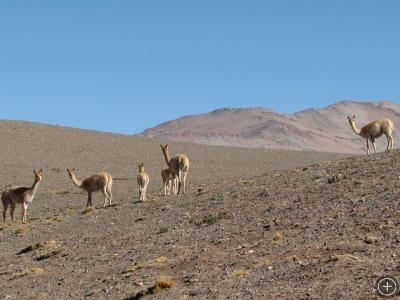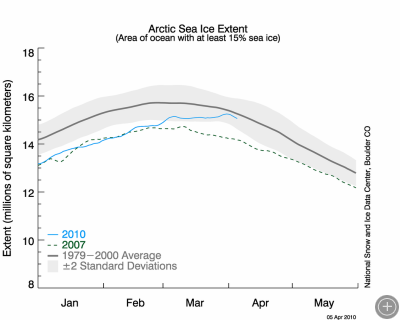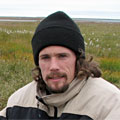From the Andes to the Arctic
LARAMIE, WYOMING– Since returning from the icebreaker cruise last fall, things have been very busy. In November, I presented some preliminary data at the Carnivore Conservation conference in Denver, Colorado. In particular, it was great to discuss the application of stable isotope analyses to ecological research with scientists working on black bears, wolves, and other species.
I have continued with my coursework and working on sample analysis back on campus. A full-time technician on the project has perfected several of the analyses we will perform on samples of muscle tissue, and we have had stable isotope analyses performed on breath samples.
This spring I traveled to Argentina to present preliminary polar bear data, visit field sites to discuss possibilities for research projects, and catch up with a friend from graduate school who is working there. It may seem odd to jump from polar bears in the Arctic to grazing animals high in the Andes mountains, but animals face similar challenges in both places – there is a season of good food availability followed by a season of poor availability and difficult weather, and the systems are fairly simple, with just a couple large-bodied animals dominating the landscape. I hope to return someday.

I gave a presentation on the polar bear project at the Universidad de La Plata, a national university near Buenos Aires. Many undergraduates attended, most studying Zoology and Ecology. I also presented at a provincial ecological research center and a national park.

These vicunas – grazing animals very similar to alpacas and llamas – live in the rocky environment of Nacional Parque San Guillermo in Argentina, at 10,000 to 14,000 feet. For a brief period during the summer lush grass is available in a few areas near water, but for most of the year, they forage on sparse vegetation. Their main predators are mountain lions, the same species that is found in North America.
The Arctic sea ice has had a very interesting winter. The sea ice extent was substantially below average for much of the winter and appeared to reach its maximum extent in early March, which is normal timing. However, cold weather over the Bering Sea and Barents Sea then caused the ice to resume growth, causing the sea ice extent to increase again and not reach its maximum until March 31st, the latest date since satellite measurements began in 1979 (interestingly, temperatures remained above average near the north pole). Ice extent is now very close to the 1979-2000 average.

Extent of sea ice in the Arctic, during this winter. The blue line shows the unusual growth of extent until the end of March. Image is reproduced from http://nsidc.org/arcticseaicenews/.
Although the sea ice extent is near normal for this time of the year, it is still below average. The ice which formed in March is thin, first-year ice which is very vulnerable to melt – although the extent is near average now, once warm temperatures return in the summer, much of this ice will melt. The proportion of ice which is greater than two years old and very thick continues to decline, contributing to the long-term trend of reduced extent. There is a good discussion of the current sea ice conditions at http://nsidc.org/arcticseaicenews/.
I am headed back to the field soon for our final intensive field season. It is still winter on the north slope; it is currently 1 degree (Fahrenheit) in Barrow, which will be my first stop.

 No comments
No comments 






